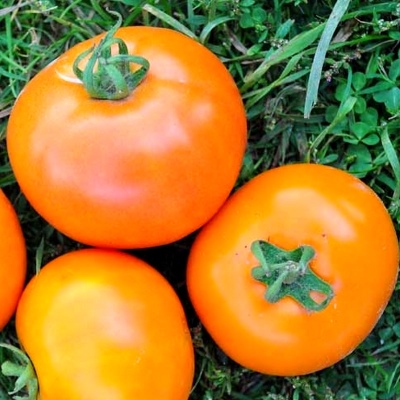
- Authors: Mashtakov A. A., Mashtakova A. Kh., Strelnikova T. R., Mashtakov N. A.
- Year of approval: 2005
- Category: hybrid
- Growth type: determinant
- Appointment: fresh consumption
- Ripening period: early
- Ripening time, days: 105-107
- Growing conditions: for open ground, for film greenhouses
- Marketability: high
- Transportability: Yes
The determinant tomato Andromeda occupies one of the leading positions among the representatives of tomatoes in world collections. The hybrid has a high yield, frost resistance, unpretentiousness and excellent taste. The combination of all these parameters explains the high and constant demand for seeds. The fruits are consumed fresh, their taste goes well with other vegetables, herbs and even fruits.
Breeding history
Gardeners and farmers owe the emergence of a remarkable hybrid to the work of breeders A. A. Mashtakov, A. Kh. Mashtakova, T. R. Strelnikov, N. A. Mashtakov. Year of approval for use 2005.
Description of the variety
A powerful, well-leafy shrub up to 80 cm high in open ground, and higher in greenhouses, belongs to the group of determinant tomatoes. The plant is covered with alternate pinnately dissected leaves of medium size, dark green in color, with a slight silvery shade. Yellow flowers are collected in a simple inflorescence, which is laid after the fifth leaf. All subsequent ones are formed in 1-2. The cluster grows from five to seven tomatoes attached to the articulated stalk. The fruits are distinguished by high transportability and good presentation with a yield of up to 99%. The plant is characterized by a short growing season, an average number of shoots and needs to stop the growth point. The tomato is grown on a support or trellis. The simultaneous ripening of the fruits allows harvesting with whole clusters.
The main qualities of the fruit
Rounded or flat-round slightly ribbed fruits weighing 64-100 grams are colored at the stage of technical and final ripeness in an intense golden-orange hue, which is explained by the high content of beta-carotene.
Taste characteristics
Covered with a dense, oily skin, tomatoes are distinguished by a balanced sweet taste with a slight acidity and a pleasant mild aroma. The amount of dry matter in percentage reaches 4-5.3, the sugar-acid index is 1.7-3.2%.
Ripening and fruiting
Andromeda belongs to the early ripening category - the declared ripening period is 105-107 days. Harvesting begins in mid-July - mid-September.
Yield
In the open field, they collect 6-7 kg, in greenhouse conditions, 9-11 kg per square meter.
The timing of planting seedlings and planting in the ground
Sowing seeds for seedlings is carried out in March, planted in a greenhouse in April, in open ground in May, if we are talking about the southern regions for which the hybrid was created.

Growing tomato seedlings is an extremely important process, because it largely depends on whether the gardener can harvest at all. All aspects must be taken into account, from seedbed preparation to planting in the ground.
Landing scheme
Seedlings are planted according to the scheme of 3 roots per square meter or with a distance of 60x40 cm.

Growing and caring
For growing in open ground, prepare a sunny place, well-drained soil with a neutral level of soil acidity. Planting of seedlings is carried out 55-60 days after the emergence of seedlings, preparing the planting holes according to the adopted scheme. The excavated soil is enriched with organic matter and complex mineral fertilizers. Pits are dug on a shovel bayonet, stakes are immediately installed if the plants are grown on a support. After planting, the soil is compacted, shed well and loosened a day later. Further care consists in timely watering before the onset of the ripening period, weeding, loosening, forming a bush in 1-2 shoots, pinching, feeding.
As for the introduction of additional nutrition, this event is held at least three times:
nitrogen fertilizers are applied during the period of growing vegetative mass;
phosphorus-potassium preparations are used during budding;
during the pouring of fruits, tomatoes are fed with fermented tincture of nettle and weeds with the addition of bread leftovers.
During the autumn digging, the soil is enriched with humus, black soil, compost. Loosening of the soil can, and even desirable, be replaced by mulching, which not only protects the soil from drying out and cracking, but also prevents moisture evaporation.




A plant needs different micronutrients at each stage of growth. All fertilizers can be divided into two groups: mineral and organic. Folk remedies are often used: iodine, yeast, bird droppings, eggshells.
It is important to observe the rate and period of feeding. This also applies to folk remedies and organic fertilizers.
Disease and pest resistance
Tomato has good resistance to viral tobacco mosaic (TMV), however, it is tolerant to many other diseases, so it is necessary to carry out timely preventive treatments with antifungal drugs.


Resistant to adverse weather conditions
Andromeda tolerates a short-term cold snap quite well.
Growing regions
The hybrid is adapted for cultivation in the North Caucasus and Central Black Earth regions.

























































































